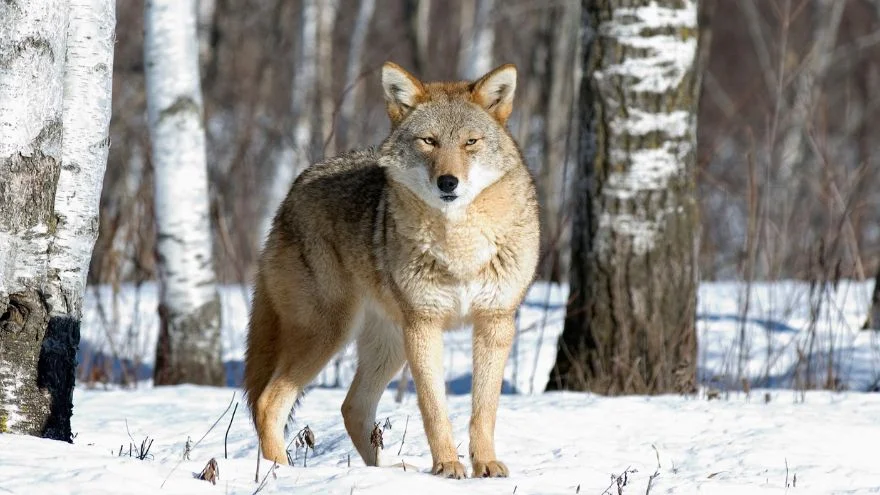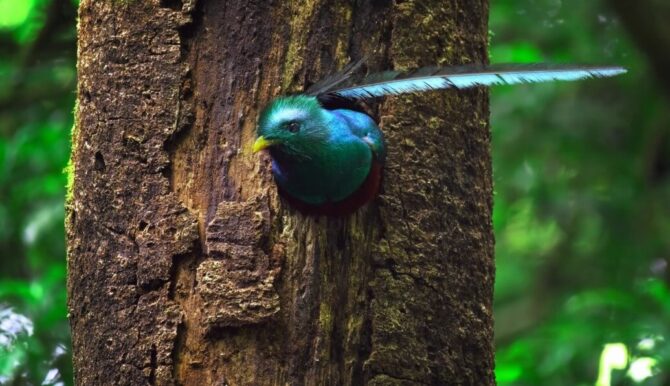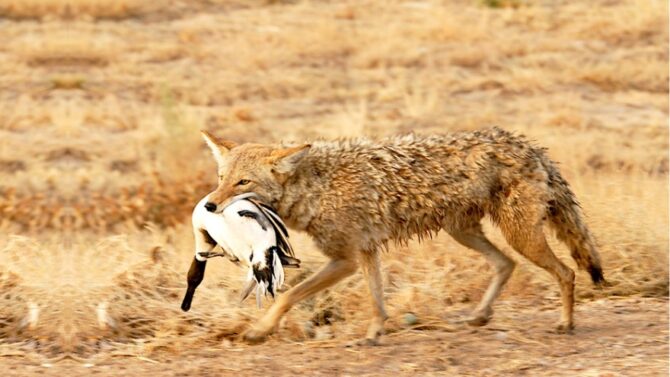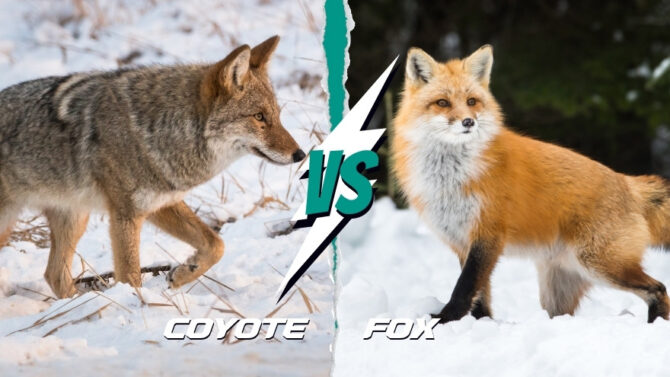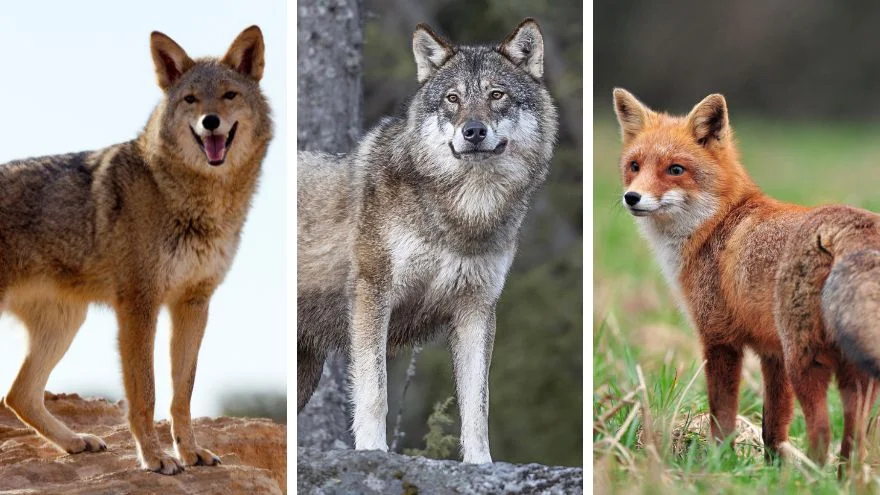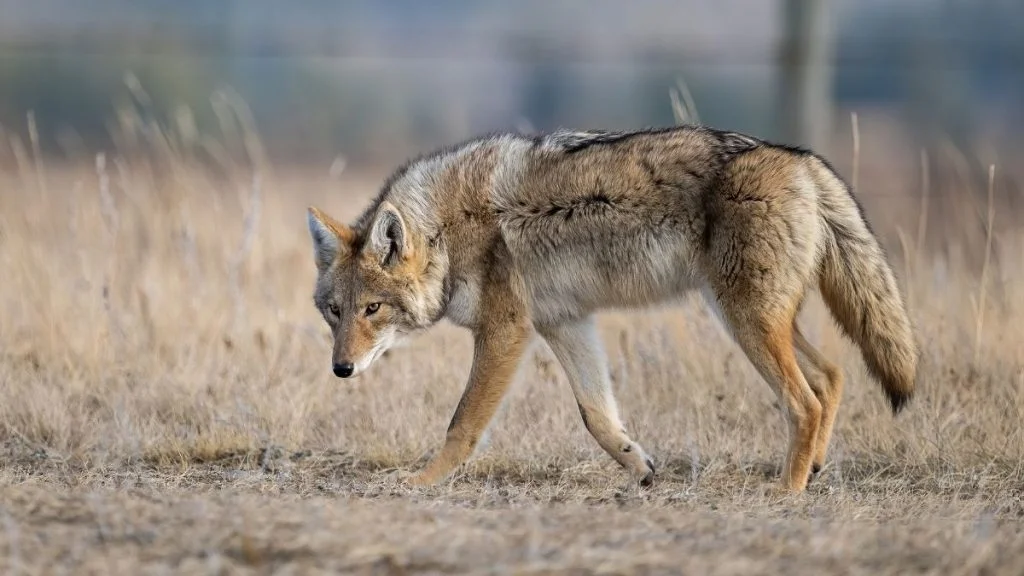Few animals, like the coyotes, adapt well to their environment and work it to their advantage.
These intelligent creatures have a reputation for being mischievous yet, excellent predators with impressive predatory instincts and maneuvers.
These instincts mainly come into play when hunting, but climbing trees seems not to make the list of the multiple tactics this wild dog species wield during a hunt.
This, thus, leaves many wondering: can coyotes climb trees?
Though their bodies are not ideal for climbing heights, coyotes climb trees, thanks to their lightweight. These wild dogs can scale heights as high as 8 feet and a distance of 14 feet. They also scale these heights at a fantastic speed of 42 mph, which is reduced to 32 mph when injured.
While coyotes can climb trees, limitations still exist to this ability. This article sheds light on these limitations and more.
Can Coyotes Climb Trees?
Contrary to the widely held opinion that this member of the canine family cannot scale trees, the coyotes are, in fact, capable of climbing trees.
However, there’s a gimmick. Being a member of the canine family, coyotes have powerful hind legs, which are ideal for sprinting but constitute a significant challenge for climbing.
Despite the anatomy of their hind legs not favoring the ability to scale trees, coyotes push the boundaries of their abilities by leveraging their claws and muscles to scale heights.
Multiple arguments exist as to why coyotes are incapable of climbing trees.
Still, these creatures have tricks to cheat the anatomy that makes it biologically difficult for them to climb.
Despite having retractable claws, coyotes can climb trees.
As marveling and astounding it is that coyotes manage to pull off this impressive trick, many continue to doubt this canine’s ability to climb trees due to the prevalence of conflicting information.
In line with the saying that seeing is believing, visual evidence of these intelligent creatures doing the impossible would concretely establish that coyotes can climb trees.
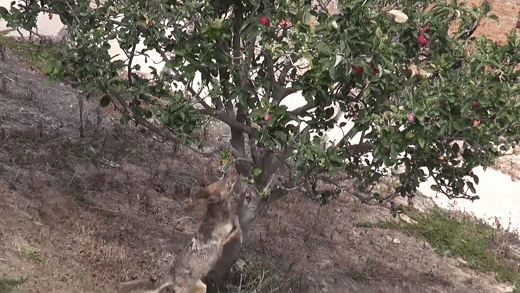
Why Do Coyotes Climb Trees?
Because of the fact that they are not biologically hardwired to climb, coyotes live in habitats distant from trees.
As such, scaling trees is not an endeavor they typically engage in, except in rare instances.
As such, you may wonder, why then do coyotes climb trees?
To Find Food
These tricky hounds climb trees primarily for two reasons. As seen in the previously stated visual evidence of coyotes scaling trees, they do so to eat fruits from low-hanging branches.
When climbing trees, instead of holding their claws to the tree trunks, they jump as high as 3 feet to the closest branch from the ground and make their way up.
Escape Danger
Aside from searching for food, coyotes climb trees for the exact reason any biological creature goes against their natural, conceivable instincts; to escape danger.
When in danger or threatened, coyotes leverage their speed to escape.
However, sprinting is not the best option when fleeing from rivals such as wolves who match them in speed.
In such instances, a coyote would opt to climb a tree, thus leveraging on their lightweight to escape.
How Fast Can Coyotes Run?
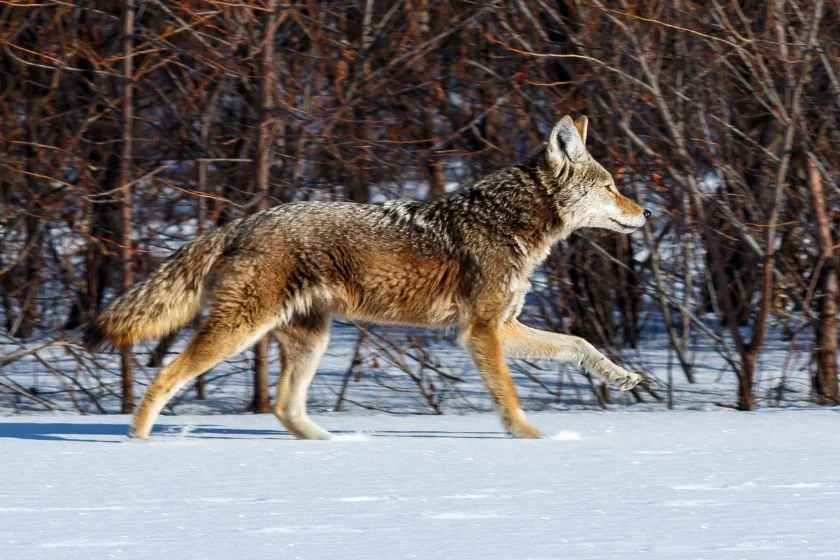
Few animals boast of much athleticism and agility as the coyote. As such, speed is one of its vital attributes.
But while coyotes are incredibly fast, how fast can they run?
Thanks to the scientific insights brought to us by the 1975 Running Speeds of Crippled Coyotes article in the Northwest Science journal, a marvelous revelation of the speed of the animals is revealed.
The study was carried out by an Oregon State University Department of Fisheries and Wildlife researcher, Bruce C. Thompson.
We saw Thompson measure the speed of three coyotes injured in one leg by steel traps.
Thompson measured the speed of the coyotes for days as they ran the perimeter of a fenced enclosure. He also measured the speed of a healthy and fit coyote.
Thompson observed that the healthy coyote reached a rate of 32 mph, and one of the injured coyotes almost matched the speed. The other two coyotes reached a top speed of 22.5 mph and 25.4 mph.
Thompson built his study on an earlier examination that measured the speed of full-bodied coyotes chased by cars.
The speed recorded in coyotes in the earlier study far outmatched the records in Thompson’s 1976 published work.
Studies show that coyotes can run as fast as 32 mph or more when in healthy condition but only go as far as 25.4 mph when injured.
How High Can Coyotes Jump?
Being the athletic creatures they are, coyotes have learned to push the boundaries of their biological limitations.
Coyotes can jump as high as three to eight feet. Their enormous strides, incredible speed, and leap power would see a coyote effortlessly leap over an eight-foot barrier.
Aside from leaping heights, coyotes can hook claws into fences and barriers and climb their way to the top.
Though this only occurs when leaping isn’t exactly convenient.
In rare instances, coyotes have been recorded to jump over 14-foot cyclone fences, an incredible feat for these canines.
Coyotes have one of the most incredible leap powers, which outmatches some of the most fierce predators.
Related Questions
What are coyotes afraid of?
As clever as they may seem, coyotes have many fears. Typically, they are afraid of people, loud noises, bright lights, predators’ urine, and objects being thrown at them.
Taking advantage of these fears is an effective technique in repelling the canines.
What smell do coyotes hate?
Coyotes have a strong smell and can perceive smell from long distances when hunting. As such, they are attracted or repelled depending on the scent perceived.
The smell of wolf urine, Chile pepper, cayenne, concentrated perfumes, and white vinegar repels them.
Does dog poop attract coyotes?
Yes! Dog poop is one attractive smell that brings coyotes to properties inhabited by humans. Hence, you should ensure your pet remains safe, and to keep these canines at bay, ensure your home is rid of dog poops.
Do coyotes run in parks?
Despite being social animals, contrary to widely held beliefs, they do not run in packs. Instead, they live in family groups.
These creatures are one of the most adaptable and would collaborate even with other animals when hunting.
But when hunting, they often venture out alone, or when they choose to hunt in the company of each other, it is mostly in pairs.
Conclusion
Intelligent, athletic, agile, and adventurous coyotes have lots of tricks that constantly surprise us.
From doing the seemingly impossible and cooperating with other species in hunts, the limits of these canines know no bounds.
Despite their biological limitations, they do pretty fine when it comes to tree climbing. They can climb high and cover great distances in a single stride.
You may doubt so much about the coyote, but never underestimate the wonders of one of the most clever and adaptable canines on the planet.
